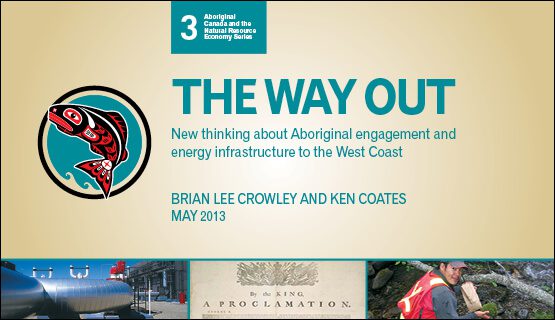MEDIA RELEASE
Rescuing Northern Gateway
How engagement with and equity participation by Aboriginal communities can help Canada live up to its potential as a world energy superpower
OTTAWA May 30, 2013 – Canada is failing to live up to its potential as an energy superpower due to a lack of access to world markets, but a new paper by the Macdonald-Laurier Institute shows how the Northern Gateway pipeline project can be put on sounder footing and deliver sustainable benefits to Canadians, including First Nations in the pipeline corridor, by increasing access to Asia.
Presently, Western Canada’s oil resources are suffering from artificially low prices as a result of lack of access to growing markets in Asia. The Northern Gateway project would help to rectify this ongoing shortfall, delivering oil to energy hungry China and India, tens of billions in increased GDP for Canadians and increased revenue for provincial and federal governments.
Right now, the biggest obstacle to approving the pipeline is not inter-provincial jurisdictional squabbles or even environmental concerns –though these are important – but the Aboriginal communities along the pipeline corridor. Aboriginal opposition to the pipeline alone is likely enough to cripple or kill Northern Gateway and any other energy pipeline to the West coast.
With Aboriginal support, however, much is possible.
Backed up by a series of legal victories, constitutional recognition of Aboriginal rights and self-government, and examples of successful partnerships between Aboriginal and non-Aboriginal organizations, the best way to remove the main obstacles facing Northern Gateway is to engage Aboriginal communities, not only in terms of consultation but as equity stakeholders,” argue the paper’s authors Ken Coates and Brian Lee Crowley.
“Our goal with this paper was to lay out the steps that can rescue the Northern Gateway project from its current impasse, highlighting that Aboriginal communities are not opposed to development”, say the paper’s authors. “Quite the opposite. There are many examples of successful Aboriginal and non-Aboriginal partnerships that can serve as models to ensure that Northern Gateway can live up to its potential to produce enormous wealth for all Canadians, including Aboriginal Canadians.”
“We want to make sure that Canadians understand that Northern Gateway stands at the intersection of Canada’s aspirations to be a world energy superpower; environmental standards of 21st century resource development; and the present and future status of Aboriginal/Non-aboriginal relations in Canada.” added Coates and Crowley. “It is in the national interest that this project move forward; otherwise, as we document in the paper, the costs of this missed opportunity would be enormous for all Canadians, not only those in Alberta and British Columbia.
The authors have identified several key factors that would help ensure Northern Gateway can be completed, including:
- Self-financing equity participation by Aboriginal communities to ensure full partnership in every aspect of the project’s execution and operation while reducing dependence on government;
- Creation of several separate revenue streams that benefit First Nations all along the pipeline corridor;
- A new long-term and region-wide approach to Impact and Benefit Agreements (IBAs) that guarantee jobs, training and other economic opportunities;
- Creating a template for further energy infrastructure developments and opening the possibility of routing them through an Aboriginal energy corridor;
- World-leading environmental monitoring and response in the event of a spill, both along the pipeline corridor and the marine corridors where shipping traffic will occur;
- Specific steps the governments of Canada, British Columbia and Alberta can take to make this project more acceptable to public opinion and affected communities.
Northern Gateway continues to face strong opposition, threatening the project’s viability and the vast wealth it could potentially generate for Canadians. By actively engaging with the Aboriginal communities along the corridor, and fair dealing in establishing equity partnerships to share the risks and the rewards the pipeline offers, the authors are confident that Northern Gateway could do more than carry Canada’s energy riches to international markets. It could symbolize a new era in business-First Nations-government collaboration in the proper and carefully managed development of this country’s natural resources.
Read the full report, The Way Out: New thinking about Aboriginal engagement and energy infrastructure to the West Coast,
The Macdonald-Laurier Institute is the only non-partisan, independent national public policy think tank in Ottawa focusing on the full range of issues that fall under the jurisdiction of the federal government.
-30 –
Readers interested in the issue of tanker safety on Canada’s west coast can get more information from MLI’s in-depth look in “Making Oil & Water Mix: Oil tanker traffic and Canada’s west coast”
For more information on Canada’s natural resource industry, please read MLI’s “Six Myths Surrounding the Development of Canada’s Natural Resources”
For more information please contact:
Sean Osmar
Director of Communications
Macdonald-Laurier Institute
sean.osmar@macdonaldlaurier.ca
613-482-8327 x 103
@MLInstitute





